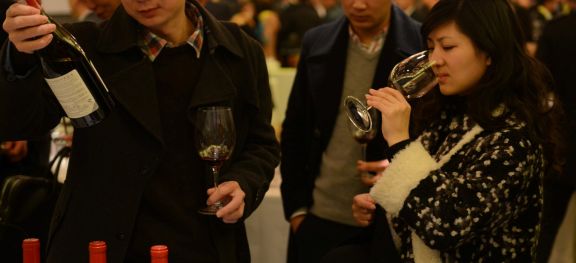A letter from China


The following is an extract of particularly interesting observations on the wine market in China from the annual report of ASC Fine Wines, the 'largest distributor of imported still wines by value' in China.
As we reported in the previous annual letters, the high-growth 'bubble' period for imported premium wines, fueled by government-funded purchases beginning in 2008-9, is now completely over and we do not foresee it to return. This is due to the Chinese Government’s austerity and anti-corruption policies, which were initially implemented in April 2012 [see China loses its shine – JR]. These policies hit the imported wine business as bans on government-funded banqueting and gifting have been progressively, strictly and effectively enforced ever since. We see no indications that these policies will change in 2015.

The good news is that during the 2008–2012 unsustainable demand period, the 'real market' continued to expand. This 'real market' sustainable demand is driven by nearly 40 million ‘real’ wine consumers – people who buy imported wine and drink it. While the government spending bubble was attracting industry, trade and media attention, the real market continued to grow steadily at 10-12% per annum. We forecast that real market consumption will continue to grow at 8-10% through to 2020. It is this market that will drive ASC’s and our supplier partners’ future growth and it is this market in which ASC is investing for the future.
Based on China Customs imported wine clearance statistics through November 2014, wine imports contracted on a moving-annual-total basis by 2% in value and grew 1% in volume. French imports were hit hard, dropping 5% by volume to less than 14 million cases. Italian wines also faced a significant drop, losing about 10% by volume.
In fact, the entire imported wine market contracted for the first eight months of 2014 on an MAT basis, the first time this occurred in the industry. This reflects the broad impact of the austerity and government policies across all customer segments and importers. From September to November, we saw imports begin to increase on an MAT basis, likely reflecting the completion of destocking in the market and some optimism for demand for entry- and mid-level wines in the 2015 Chinese New Year Festival buying cycle.

On the other hand, Chilean wine volume grew 40%, approaching 4 million cases. Chilean growth was driven by its lower import duties due to the China–Chile free trade agreement [signalled more than a year ago on this website in Chile woos China – JR] and due to the surge of private label wines being sold through Baijiu distributors in 3rd and 4th tier cities. Imports from the Spain are also up 15% by volume, again largely private label-driven.

As a result of the collapse of the price-insensitive government-funded demand and increase in price-sensitive 'real market' demand, almost all export countries experienced average price per litre decreases compared with 2013. On average, price-per-litre dropped 3%.
The market for sparkling wines has grown to imports of 1.4 million cases, a 60% increase over last year. Sparkling wines are growing in popularity as Chinese consumers experiment with different styles of grape wine. Italy is the clear leader, composing 50% of those imports, followed by Spain and France at around 15% each.
Become a member to view this article and thousands more!
- 15,397 featured articles
- 274,683 wine reviews
- Maps from The World Atlas of Wine, 8th edition (RRP £50)
- The Oxford Companion to Wine, 5th edition (RRP £50)
- Members’ forum
- 15,397 featured articles
- 274,683 wine reviews
- Maps from The World Atlas of Wine, 8th edition (RRP £50)
- The Oxford Companion to Wine, 5th edition (RRP £50)
- Members’ forum
- Commercial use of our Tasting Notes